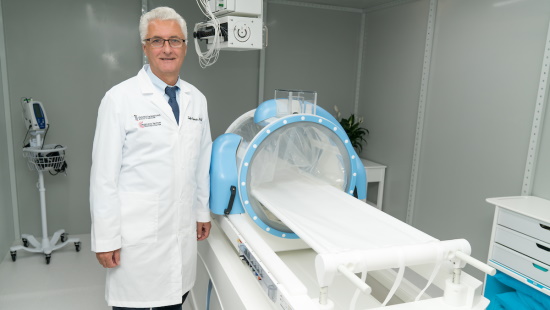Tumor Treating Fields (TTF)
Non-invasive treatment uses alternating electrical fields to disrupt tumor growth
Experts in the Department of Radiation Oncology, together with a multidisciplinary team of oncologists and neurosurgeons at the University of Maryland Marlene and Stewart Greenebaum Comprehensive Cancer Center, have begun offering a new treatment for patients with recurrent glioblastoma, a deadly type of brain tumor that is resistant to chemotherapy and radiation.
The treatment, known as Tumor Treating Fields (TTF), is delivered to the patient via a device that fits over the scalp like a bathing cap. It works by emitting alternating electrical fields to the tumor that disrupt the division of cancer cells and stop tumor growth. The device was approved by the Food and Drug Administration (FDA) for the treatment of recurrent glioblastoma in 2011.
The device will be further studied in a randomized trial being developed by a national co-operative group brain tumor committee led by Dr. Mehta, who is also developing a trial to test whether the device can be combined with stereotactic radiosurgery to delay the use of whole brain radiotherapy in patients with brain metastases.
The TTF device is worn continuously for several hours every day, and patients return for check-ups at one-to-two-month intervals.
“We are encouraged by the results we are seeing in our patients with this very challenging disease,” says William Regine, MD, professor and Isadore & Fannie Schneider Foxman Endowed Chair in Radiation Oncology at the University of Maryland School of Medicine.

